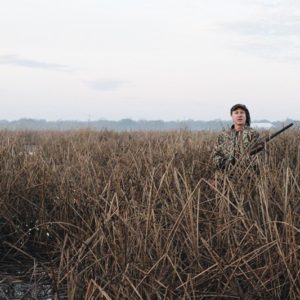New report addresses status of working lands
Report shows 20-year changes in Texas’ population, land values, size of operations

The new Texas Land Trends report “Status Update and Trends of Texas Working Lands 1997–2017,” produced by the Texas A&M Natural Resources Institute, NRI, has been published. Land-trends reports have informed private and public landowners and decision-makers for more than two decades.
“With this report, we are able to examine new patterns and identify trends following the release of the Census of Agriculture datasets by the U.S. Department of Agriculture National Agricultural Statistics Service,” said Roel Lopez, Ph.D., director of the NRI. “This most recent report is the fifth iteration and specifically describes the status and recent changes in land values, ownership size and land use of privately-owned Texas working lands.”
Lopez said some highlights of the report relate to the areas of population growth, land values, ownership size and working lands.
Population Growth
Texas contains seven of the top 15 most rapidly growing cities in the nation. From 1997 to 2017, the Texas population increased 48% from 19 million to 29 million residents or nearly 470,000 new residents annually. Eighty-six percent of the population increase occurred within the state’s top 25 highest growth counties.

Land Values
As with previous land-trend reports, the largest increases in land values were observed in proximity to major metropolitan areas. The average appraised market value of Texas working lands was $1,951/acre in 2017, a 24% increase from 2012 and a 291% increase for the 20-year period.
Ownership Size
Texas gained approximately 1,000 new working operations per year from 1997 to 2017, totaling greater than 248,000 ownerships in all. Average ownership size declined from 581 acres in 1997 to 509 acres in 2017. Small operations of less than 100 acres in size were 58% of all ownerships but only accounted for 4% of land devoted to working lands.
Working Lands

From 1997 to 2017, Texas lost approximately 2.2 million acres of working lands by way of those lands being converted to non-agricultural uses. There was a decline of nearly 1.2 million acres as a result of this conversion over the last five-year period alone. Accounting for the majority of working lands in the state, grazing lands have been steadily decreasing since 1997, losing and/or converting roughly 4.6 million acres to other land uses over the 20-year period. Wildlife management acres have significantly increased in recent years, now totaling approximately 5.4 million acres, up from about 94,000 in 1997.
“The report shows as Texas continues to grow in population and economy, the demand for rural land, especially in areas surrounding major urban centers and transportation corridors, will continue to increase and have long-term impacts on working lands,” Lopez said. “Lands across the state are following much of the same trends in ownership fragmentation and conversion in the last five-year period as have been observed in previous years since 1997.”
He also noted population growth and increasing land values are creating incentives for landowners to subdivide and sell their land.
“As ownership sizes decrease, the likelihood of maintaining a profit with traditional farming, ranching, and forestry uses also decreases, facilitating the conversion of working lands to non-agriculture uses,” Lopez said.
Lopez also noted the benefits from working lands go beyond the economic benefits they provide – from general agricultural production in the form of crops, livestock, timber and more.

“Open spaces in Texas also provide valuable ecosystem services that we rely on for everyday necessities, such as air and water quality, carbon sequestration and wildlife habitat,” he said. “Fragmentation and conversion of working lands disrupts the natural processes of healthy ecosystems, creates an increased financial burden to mitigate impacts and elevates pressures on remaining open spaces to provide these services for growing urban areas.”
Lopez said the future conservation of working lands is directly linked to private landowners who strategically steward these properties.
“Informed conservation and urban planning efforts should include and target these landowners as well as explore methods to incentivize the continued stewardship of working lands in Texas,” he said.


